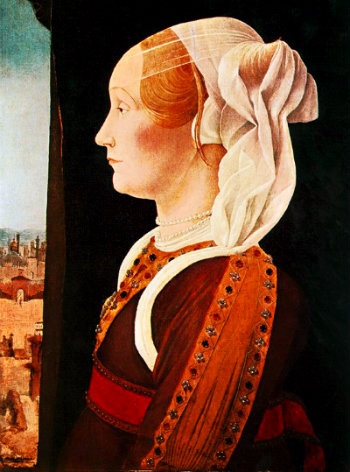The History of Art And The Curious Lives of Famous Painters
|
||||
|
Biography Ercole de Roberti was the most important painter of the 15th-century school of Ferrara. He was employed as the principle court painter to the Estes, a super wealthy Italian noble family and celebrated patrons of the arts. His work consisted largely of religious themes overflowing with breathtaking dramatic elements. Ercole de Roberti's most famous masterpiece is his 'Pieta', circa 1495. This artwork was originally created for the church of San Giovanni in Monte, Bologna. It is considered one of the greatest masterpieces of the Ferrarese School . Ferrarese SchoolDistinguished author and historian, John C. Van Dyke
|
||||
|
About The High Renaissance Period The early Renaissance was partly ignited by several great teachers and philosophers. Vittorino da Feltre, (1373-1446) of Mantua in Italy and Lorenzo Valla, (1407-1454) of . He based his teachings upon rediscovered writings of ancient Greek and Roman philosophers and statesmen. Principally Quintilian, Cicero, Aristotle, and Plato. Renaissance humanism is a movement which is based upon classical Greek and Roman literary writings and philosophical teachings. Artists of the Renaissance were elevated in social standing and their art was no longer looked upon as simple handicrafts, but as divinely inspired creations. The spirit of an era awoke, revitalized with knowledge and creativity. Although art still served a specific functions, which were primarily religious, painters added more of their individual spirit and personal vision to their creations. John Ruskin, famous art historian stated, "The art of any country is the exponent of its social and political virtues . The art, or general productive and formative energy, of any country, is an exact exponent of its ethical life. you can have noble art only from noble persons, associated under laws fitted to their time and circumstance."
The major painters of the Renaissance were not only artists but men of great genius who gave the world their great intellectual gifts. Florentine and Venetian painting were both formed by extraordinary personalities. These independent creative geniuses tackled mathematical, artistic and philosophical problems of the highest interest, and presented solutions that have never lost their value. The sense of humanism pervading renaissance painting is still palpable. The painters touched on a multitude of issues regarding the human condition - death, love, reason, religion, universal morality, social problems. |
||||
|
Key Descriptive Words and Phrases associated with the Renaissance Movement - rebirth, rediscovery of the classical world, publication of Della Pittura, a book about the laws of mathematical perspective for artists, sfumato, chiaroscuro, Savonarola, spiritually significant, illuminated manuscript, idealized biblical themes, scriptorium, illuminator, , Age of Discovery, curiosity about the natural world, realistic use of colours and light, Bonfire of the Vanities, Old Testament stories, ethereal and foggy backgrounds, The Blackdeath, Gospel parables, romanticized landscapes, Christian symbolism. Require more facts and information about Ercole de Roberti and the artists of the renaissance era? Poke around every nook and cranny of the known universe for information this subject. Search Here © HistoryofPainters.com If you like this page and wish to share it, you are welcome to link to it, with our thanks. If you feel you have worthwhile information you would like to contribute we would love to hear from you. We collect essential biographical information and artist quotes from folks all over the globe and appreciate your participation. When submitting please, if possible, site the source and provide English translation. Email to millardmulch@gmail.com |
